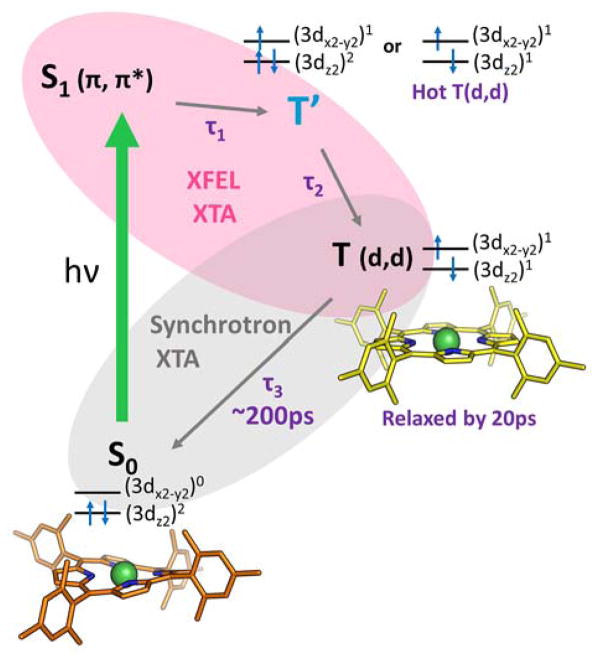Figure 1.
The relaxation pathway of NiTMP following Q-band excitation (e.g. at 527 nm). Structures for states characterized by XTA are shown. Within a few ps the porphyrin macrocycle S1(π, π*) population has dissipated by transfer of the excitation to the metal center. The resulting state (T′) is therefore either a hot (3dz2, 3dx2-y2) state which decays to the relaxed (3dz2, 3dx2-y2) state T(d,d) via vibrational relaxation or a (π, 3dx2-y2) state with Ni(I) character that transfers an electron back to the ligand. By 20 ps the T(d,d) state is fully populated and vibrationally relaxed, and has adopted a flattened structure with elongated Ni-N bonds.2 This T(d,d) state decays back to the ground state with a 200 ps lifetime.6

